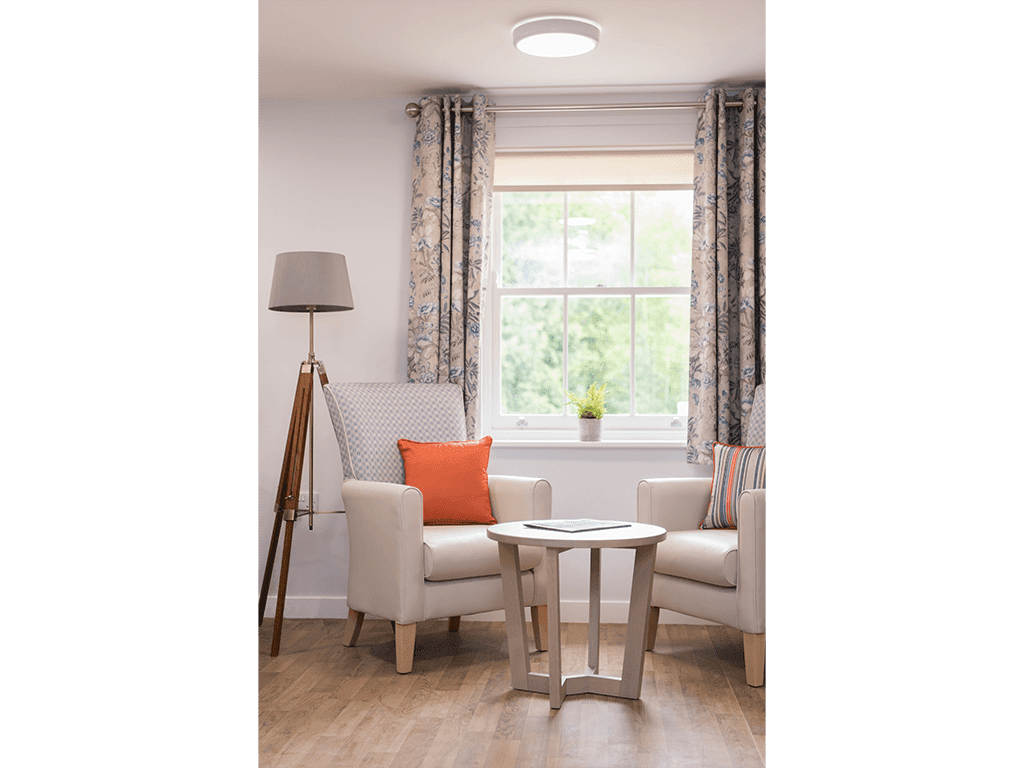- Article
- Jordan Cantley
A challenging environment by it’s very nature has to be able to withstand extreme forces and pressures at times, which can often mean that the furniture and furnishings available for these interiors

Sadly, current statistics show that by 2050, 131.5 million people globally will be living with dementia. Therefore, future proofing our care homes now with dementia friendly interiors has never been more important. Research surrounding dementia friendly interiors is extensive and there are many subtle changes we can make to the environments of those living with dementia to improve their lives and support their independence.
One term that you may have heard when considering dementia friendly interiors is Light Reflectance Value (LRV). In this post we explain what LRV is, why it’s important and how you can practically apply the principles of LRV to create dementia friendly interiors.
Simply put, an LRV is the percentage of light that a colour reflects or absorbs. The lighter the colour, the more light it will reflect, whilst darker colours will absorb more light – for example black has an LRV of 0 and white has an LRV of 100. Whilst an LRV is tested against a colour, it actually measures the relative light and darkness, therefore you will often find that completely different colours will have the same LRV if they reflect or absorb the same amount of light.
To establish an LRV, colours are tested and given an LRV rating out of 100 based on the amount of light they reflect or absorb. Some upholstery manufacturers, such as Panaz, have had their upholsteries tested and the LRV values are indicated on their website to enable us to put together a cohesive scheme easily. Many flooring and paint manufacturers will also specify the LRV of their products.
As we age our eyesight and the ability to distinguish between different objects becomes diminished. If we couple this with the additional confusion that is often a symptom of someone living with dementia, it becomes clear that the environment needs to be carefully designed to enable people to be as independent as possible. Correctly applying the principles of LRV will allow a resident to identify different objects clearly, as well as making wayfinding and decision making much easier.
There are some key principles to apply when considering LRV within a dementia setting which we look at when specifying furniture, soft furnishings and appropriate flooring and wall coverings.

There are key areas that you will consider when designing any interior scheme, by adding in the consideration of LRV you can ensure that your new environment will be as dementia friendly as possible. The basic principle is to ensure that there is a 30 point LRV difference between colours that are directly adjacent to each other. Below we set out how this should be considered practically:
Whilst designing a dementia friendly interior can often seem like a minefield at first, our expert team have years of experience creating interiors that enable residents to live independently and provide a high quality of life through careful design considerations. If you’d like advice on your interiors, contact us on 01603 664 900 or email sales@furncare.co.uk.
| Cookie | Duration | Description |
|---|---|---|
| cookielawinfo-checkbox-analytics | 11 months | This cookie is set by GDPR Cookie Consent plugin. The cookie is used to store the user consent for the cookies in the category "Analytics". |
| cookielawinfo-checkbox-functional | 11 months | The cookie is set by GDPR cookie consent to record the user consent for the cookies in the category "Functional". |
| cookielawinfo-checkbox-necessary | 11 months | This cookie is set by GDPR Cookie Consent plugin. The cookies is used to store the user consent for the cookies in the category "Necessary". |
| cookielawinfo-checkbox-others | 11 months | This cookie is set by GDPR Cookie Consent plugin. The cookie is used to store the user consent for the cookies in the category "Other. |
| cookielawinfo-checkbox-performance | 11 months | This cookie is set by GDPR Cookie Consent plugin. The cookie is used to store the user consent for the cookies in the category "Performance". |
| viewed_cookie_policy | 11 months | The cookie is set by the GDPR Cookie Consent plugin and is used to store whether or not user has consented to the use of cookies. It does not store any personal data. |